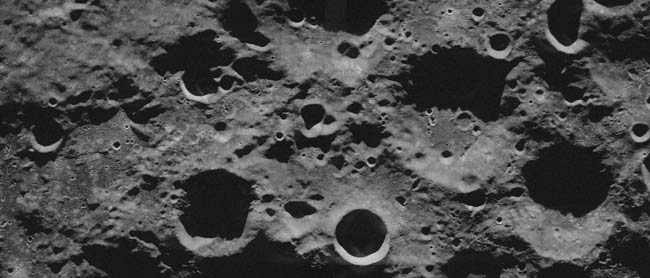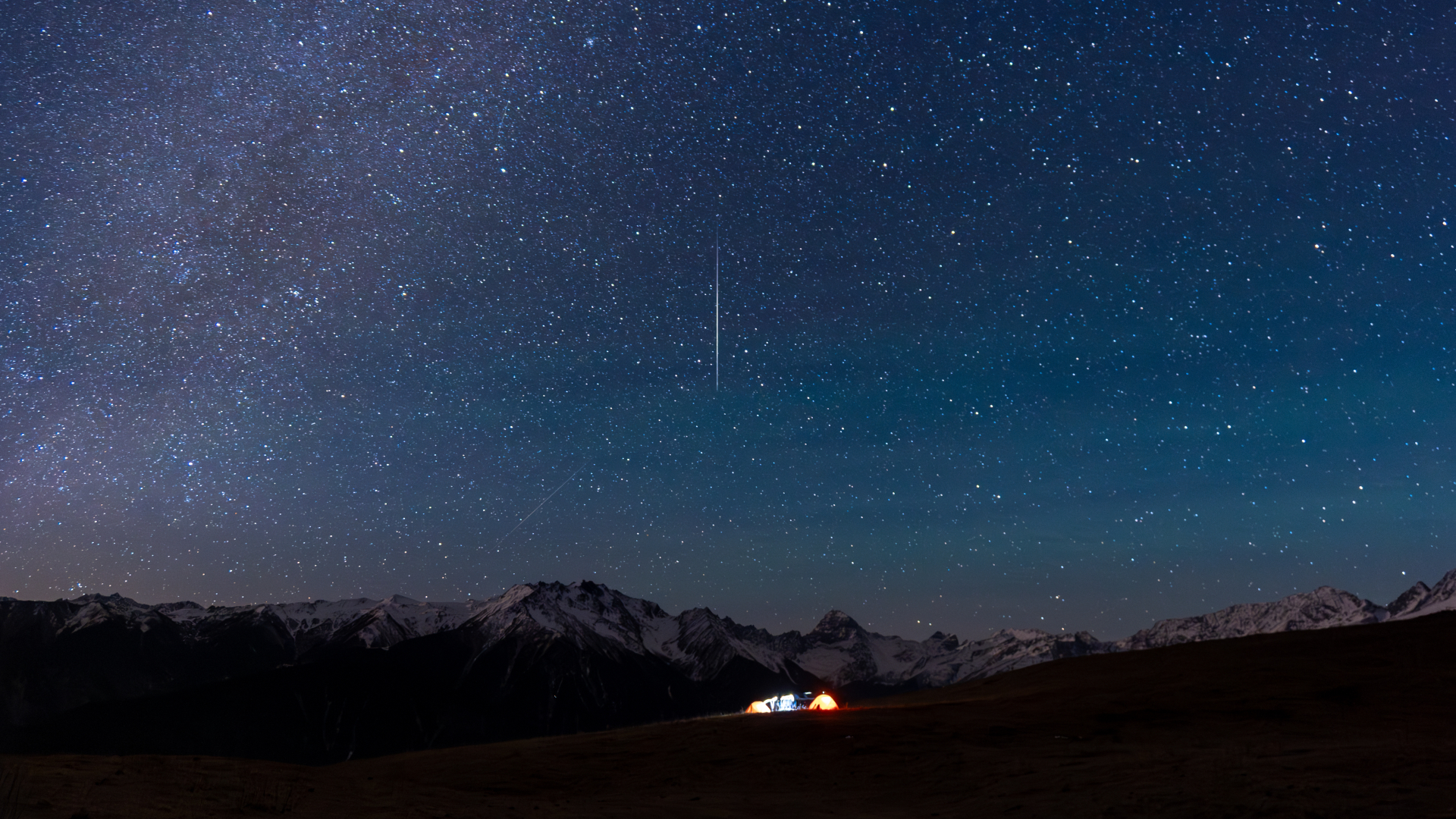New Images Dampen Hope for Water Ice on Moon

New high-resolution radar images of the Moon have diminished hopes that the lunar poles might harbor water that could sustain future lunar and solar system explorations.
The images, discussed in the Oct. 19 issue of the journal Nature, showed no evidence that ice exists in craters at the lunar south pole.
Even in the lunar summer at the south pole, the Sun barely edges above the horizon, so the bottoms of impact craters are in permanent shadow.
Since the 1960s, theorists have suggested that these "cold traps" might contain deposits of water ice. The theory was bolstered in 1992 when Earth-based radar telescopes located "ice deposits" inside impact craters at the poles of the planet Mercury.
Because of the tilt of the Moon's orbital plane relative to the Earth's equatorial plane, the Earth can rise much higher above the horizon at the lunar south pole than the Sun, so telescopes on the Earth can use radar to "see" some of the shadowed areas of the Moon.
Earth-based radar measurements of the Moon since the 1990s have consistently failed to detect ice deposits similar to those on Mercury.
Since water ice could be converted to oxygen, drinkable water or even rocket fuel, it would be a valuable resource for any future lunar base. Because of this high value, NASA's 2008 Lunar Reconnaissance Orbiter will crash two vehicles onto the Moon to search for water ice at the South Pole.
Breaking space news, the latest updates on rocket launches, skywatching events and more!
In 1999, the Lunar Prospector orbiter discovered concentrations of hydrogen at the lunar poles. If this hydrogen were in the form of water molecules-still a subject of debate-then it would correspond to an average of 1 to 2 percent of water ice in the lunar soil in the shadowed terrain.
"These new results do not preclude ice being present as small grains in the lunar soil based on the Lunar Prospector's discovery of enhanced hydrogen concentrations at the lunar poles," said Donald Campbell, a Cornell University professor of astronomy and a principal investigator of the study. "There is always the possibility that concentrated deposits exist in a few of the shadowed locations not visible to radars on Earth, but any current planning for landers or bases at the lunar poles should not count on this."

Space.com is the premier source of space exploration, innovation and astronomy news, chronicling (and celebrating) humanity's ongoing expansion across the final frontier. Originally founded in 1999, Space.com is, and always has been, the passion of writers and editors who are space fans and also trained journalists. Our current news team consists of Editor-in-Chief Tariq Malik; Editor Hanneke Weitering, Senior Space Writer Mike Wall; Senior Writer Meghan Bartels; Senior Writer Chelsea Gohd, Senior Writer Tereza Pultarova and Staff Writer Alexander Cox, focusing on e-commerce. Senior Producer Steve Spaleta oversees our space videos, with Diana Whitcroft as our Social Media Editor.
